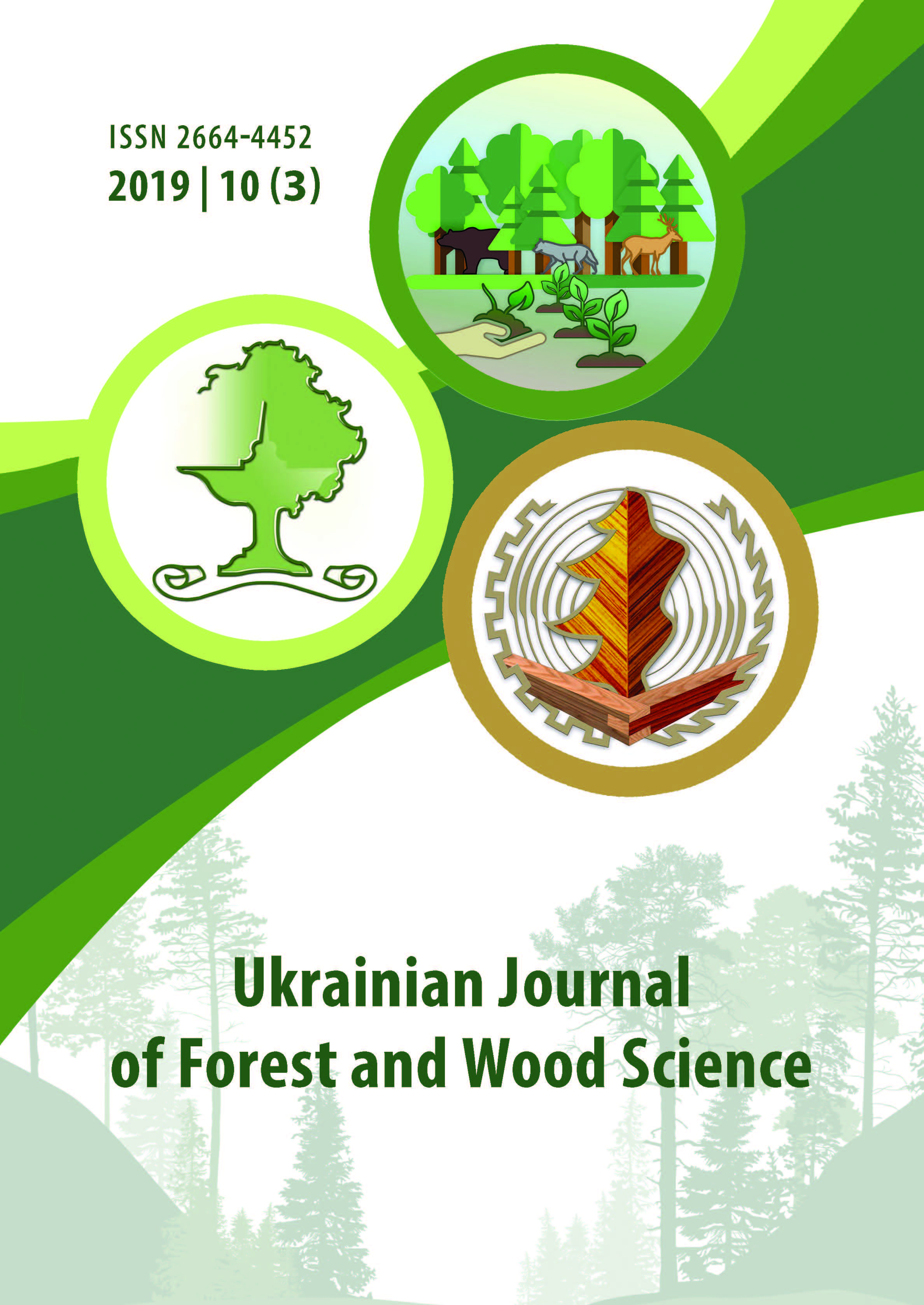Biomorphological structure of restored vegetation cover of abandoned lands of the Forest-Steppe of Ukraine
DOI:
https://doi.org/10.31548/forest2019.03.079Abstract
Due to the influence of the anthropogenic factor and as a result of vegetation autogenesis, on the floodplains and abandoned lands with restored meadow vegetation, adaptive ecologically conditioned species conglomerates has been formed. Therefore, the study of the biomorphological structure of the different groups of plant species of restored meadow vegetation allows using quantitative relations between plants belonging to different life forms to reveal significant indices for the analysis of the flow of demutations, eventually expanding the representation of the occurrence of demotion processes on floodplains and abandoned lands with restored meadow vegetation.
The features of plant life forms and the morphology of their vegetative organs are one of the determining factors for spatial structure of plant communities. The relevance of the study is due to the correlation between the biomorphological structure of the flora, ecology of the plant communities and their dynamic trends.
The research is based on the results of five-year investigation on the abandoned lands with restored vegetation cover of meadows in the Forest-Steppe of Ukraine (2013–2017). The biomorphological analysis of a floral structure of restored meadow vegetation cover according to the classification of plant life forms by K. Raunkiaer has been conducted.
The predominant group is hemicryptophytes (amount 358 species or 58.8 %), the second position belongs to terophytes (115 species or 18.6 %), cryptophytes occupy the third position with 66 species (10.7 %), there are the 42 species (6.8 %) of mesophanerophytes, nanophanerophytes and hamephytes containing 38 plant species (6.1%).
The direct proportional relationship between the fraction of hemicryptophytes and terophytes in the structure of restoration stages enable quantifying changes of the ratio value from the first to the fourth stages of demutation.
Formation of the main zonal and typological features of restoring of a meadow vegetation cover were detected on the third restoration stage, which corresponds to a period of 15 years from the moment of disturbance. The results of research allow establishing the provisions of the revisions in the system of restoration stages and optimizing the restoration of vegetation in the Forest-Steppe of Ukraine.
Keywords: life forms, restoration, abandoned lands, meadow vegetation.
References
Borovik, L. (2011). Peculiarities of segetal plant communities of the east of Lugansk region as an initial stage of the abandoned fields succession. The Journal of V. N. Karazin Kharkiv National University. Series: Biology, 14 (971), 33-42 [in Russian].
Didukh, Ya., & Pliuta, P. (1994). Phytoindication of the ecologycal factors. Kyiv: Nauk. dumka, 280 [in Ukrainian].
Zhestkova, D., Chesnokova, E., & Uromova, I. (2013). Flora analysis of urban areas along major thoroughfares of Nizhni Novgorod city. Vestnik of Lobachevsky University of Nizhni Novgorod, 1 (1), 140-145 [in Russian].
Ledovskyi, N., & Khodiachykh, Y. (2015). Ecological and phytocoenotic characteristics of uneven-aged abandoned lands of the steppe zone of the Southern Ural. Vestnik of Orenburg state pedagogical university, 10 (185), 341-343 [in Russian].
Lysohor, L. (2014). The structural-comperative analisis of flora the abandoned lands Apostolovskiy geobotanical regions. The Scientific Issues of Ternopil Volodymyr Hnatiuk National Pedagogical University. Series: Biology, 1 (58), 5-11 [in Ukrainian].
Parpan, V., & Olijnyk, M. (2013). Direction of flora synanthropization changing on the fallows of Prednistrovian Podillya. Visnyk of the Lviv University. Biologycal Series, 63, 133-140 [in Ukrainian].
Yakubenko, B., Churilov, A., Tertyshnyi, A., et al. (2017). Recommendations for the conservation of meadow plant communities and restoration of vegetation on abandoned lands in the Forest-steppe of Ukraine. Kyiv: Publishing outfit "Lyra-K", 74 [in Ukrainian].
Sulaiman, D. (2016). Ecological assessment of the flora and vegetation of different ages deposits Donetsk and Lugansk regions of Ukraine. Oles Honchar Dnipro National University, 24 [in Ukrainian].
Raunkiaer, C. (1934). Life formes of plants and statical plant geography. New York; London, 352.
Downloads
Published
Issue
Section
License
Relationship between right holders and users shall be governed by the terms of the license Creative Commons Attribution – non-commercial – Distribution On Same Conditions 4.0 international (CC BY-NC-SA 4.0):https://creativecommons.org/licenses/by-nc-sa/4.0/deed.uk
Authors who publish with this journal agree to the following terms:
- Authors retain copyright and grant the journal right of first publication with the work simultaneously licensed under a Creative Commons Attribution License that allows others to share the work with an acknowledgement of the work's authorship and initial publication in this journal.
- Authors are able to enter into separate, additional contractual arrangements for the non-exclusive distribution of the journal's published version of the work (e.g., post it to an institutional repository or publish it in a book), with an acknowledgement of its initial publication in this journal.
- Authors are permitted and encouraged to post their work online (e.g., in institutional repositories or on their website) prior to and during the submission process, as it can lead to productive exchanges, as well as earlier and greater citation of published work (See The Effect of Open Access).

